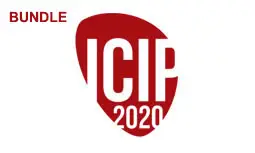GLEASON GRADING OF HISTOLOGY PROSTATE IMAGES THROUGH SEMANTIC SEGMENTATION VIA RESIDUAL U-NET
Amartya Kalapahar, Julio Silva-Rodrïguez, Adrián Colomer, Fernando López-Mir, Valery Naranjo
-
Members: FreeSPS
IEEE Members: $11.00
Non-members: $15.00Length: 11:47
26 Oct 2020
Worldwide, prostate cancer is one of the main cancers affecting men. The final diagnosis of prostate cancer is based on the visual detection of Gleason patterns in prostate biopsy by pathologists. Computer-aided-diagnosis systems allow to delineate and classify the cancerous patterns in the tissue via computer-vision algorithms in order to support the physicians' task. The methodological core of this work is a U-Net convolutional neural network for image segmentation modified with residual blocks able to segment cancerous tissue according to the full Gleason system. This model outperforms other well-known architectures, and reaches a pixel-level Cohen's quadratic Kappa of 0.52, at the level of previous image-level works in the literature, but providing also a detailed localisation of the patterns.



